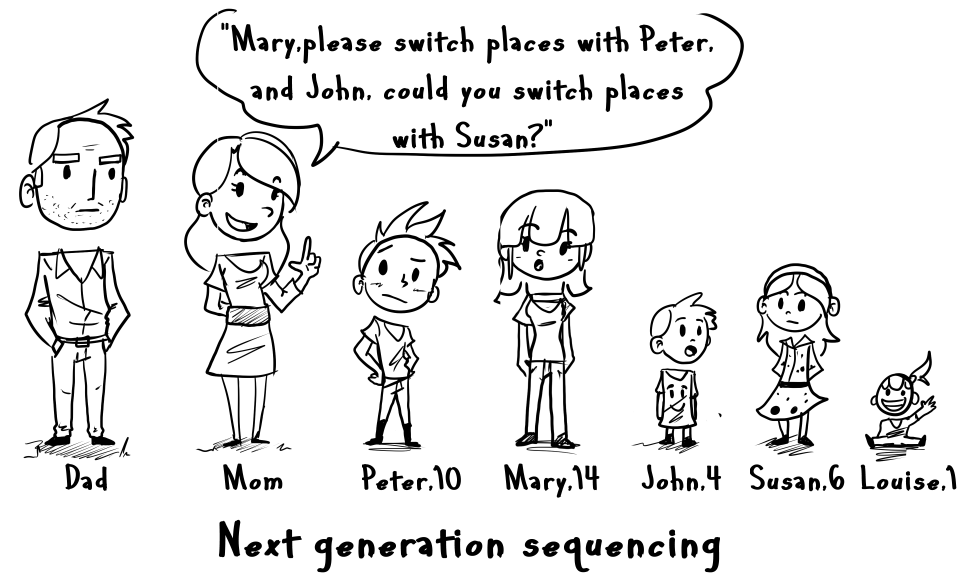 When I was a little kid and my mom asked me what I wanted to be when I grew up, I would tell her: “I want to be President ––– of the Genetics Society of America”….uh….maybe not.
When I was a little kid and my mom asked me what I wanted to be when I grew up, I would tell her: “I want to be President ––– of the Genetics Society of America”….uh….maybe not.
But electoral success came my way anyway. Think of the perks: the fancy house, the private plane, the entourage, my own tune playing when I arrive….uh….maybe not. So what is all the buzz about this position, and why are populations of geneticists clamoring to replace me when my term is up?….uh….okay. One Vice-President will move up to replace me, and we already know who she is (it’s Lynn Cooley from Yale).
The real stated perks, though, include some modest real estate on GSA’s Genes to Genomes blog. But don’t let me take advantage of it to grump nostalgically – I don’t want to be the scientific society president who decries the current state of the field and pines for the good old days. You won’t hear me reminisce about how we tramped miles through the snow to get to the lab, how molecular biology kits and nematodes hadn’t been invented yet, or how we knew every component of every buffer we used.
Because right now is the best of all possible times to be a geneticist!

As a graduate student, I sequenced RNA and DNA for a living, contributing to the first genome sequence of an influenza virus of some 13,000 bases. Today an undergraduate biology major – or maybe a high school student – tosses this genome onto a modern sequencer to generate that much data in about 0.000001 seconds. I don’t miss pouring those acrylamide gels, handling that 32P-labelled nucleotide, reading those endless 4-columned barcodes of As, Cs, Gs, and Ts and writing down the sequence by hand – and you shouldn’t either. That’s progress and we should delight in it.
Having the genome sequences of so many organisms and so many individual humans means that we don’t spend much time collecting DNA sequence data. Instead, we design imaginative experiments that make use of the unity of all biology apparent from the alignment of gigabases of sequence. We carry out mutant screens and rapidly identify mutations by comparison to high quality reference genome sequences. These are scenarios undreamt of a few decades ago and we should celebrate them.
We make exact changes in the genome of the cells we study – perhaps to match a gene sequence of someone with disease – and put these cells through a battery of sophisticated assays. We reconstruct elaborate pathways of differentiation and development. We build complex circuits with feedback and feedforward loops to synthesize metabolites, drugs, and other chemicals. That’s our world, and it’s a wonderful one.
During my years as a graduate student, the first stirrings of computational biology could be seen; today, some of our most talented graduate students will never hold a pipet or run a gel. Others will carry out experiments and then pause for months as they switch to analyzing the data. Where once we worked in small isolated groups, geneticists now work hand in hand with statisticians or modelers, with computational chemists or structural biologists, with synthetic biologists or genome engineers. That’s our style of science, and it’s much the better for it.
Genetics is more than just a part of the excitement in biology: it’s the central part. Our way of thinking is integral to the understanding of any disease, the design of any drug, or the dissection of any signaling pathway. You can no more provide chemotherapy to treat a cancer without considering the tumor’s evolution than you can give a transfusion without typing a patient’s blood antigens. We work in a field whose impact on biology is huge and will only continue to grow.
Of course, it’s not a utopia out there. In other posts, we’ll discuss gloomy funding prospects, the challenges of finding a satisfying career in genetics, what we might do to keep early career biologists who want children in science, and the minefield of publishing in high profile journals. And this shouldn’t be just my blog: please send me (my last name at uw.edu; subject line: Count) your comments and ideas on what you think the GSA should be doing in these or other arenas. Even better: let me know what you can do to help us out.
But as we start this new year and new GSA presidency, let’s rejoice in what our field has accomplished and the prospects for continuing stunning discoveries. In this most wonderful time to be a geneticist, let us count our lucky stars.












